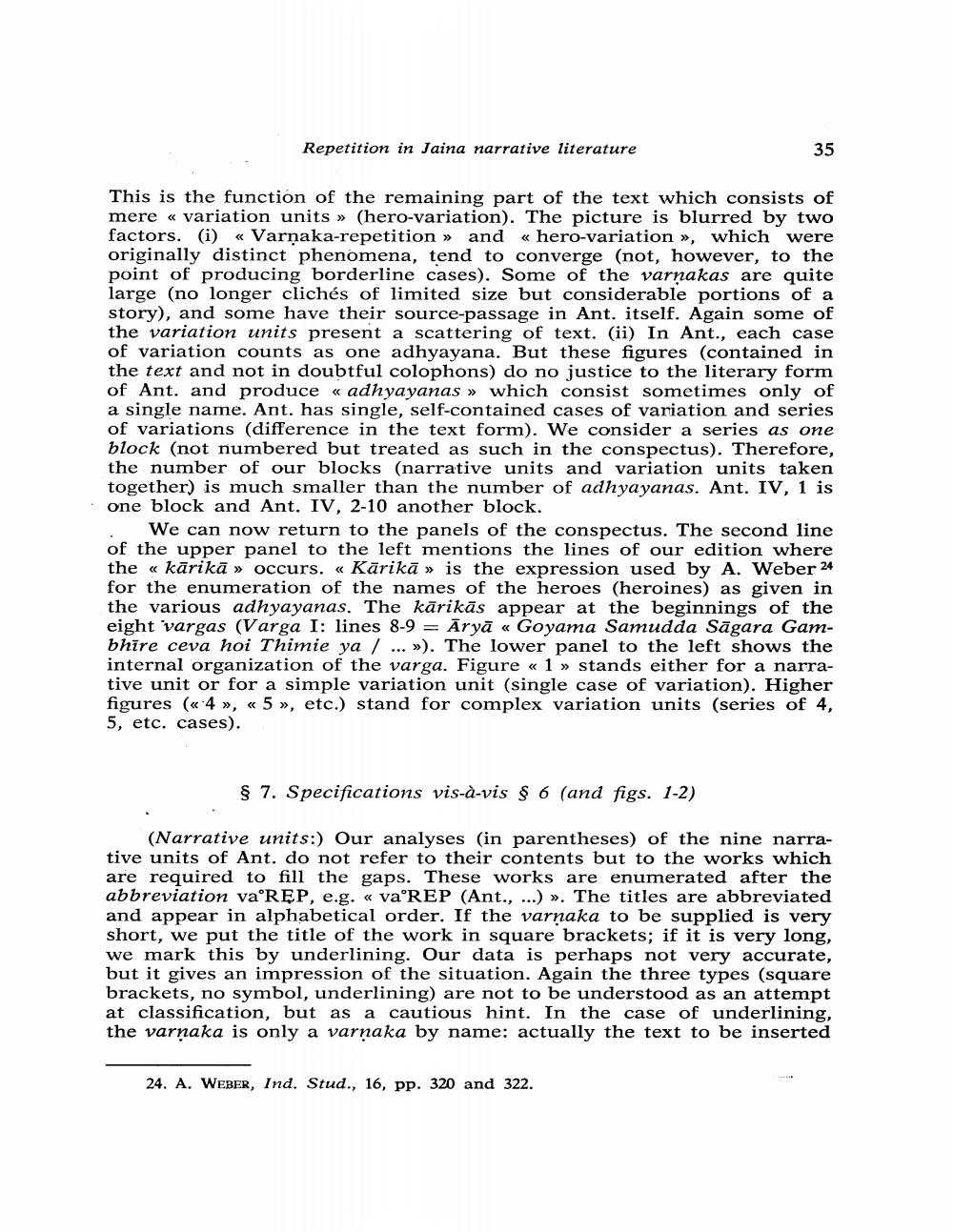Book Title: Repetition In Jaina Nrative Literature Author(s): Klaus Bruhn Publisher: Klaus Bruhn View full book textPage 9
________________ Repetition in Jaina narrative literature This is the function of the remaining part of the text which consists of mere « variation units » (hero-variation). The picture is blurred by two factors. (i) < Varnaka-repetition > and <hero-variation », which were originally distinct phenomena, tend to converge (not, however, to the point of producing borderline cases). Some of the varnakas are quite large (no longer clichés of limited size but considerable portions of a story), and some have their source-passage in Ant. itself. Again some of the variation units present a scattering of text. (ii) In Ant., each case of variation counts as one adhyayana. But these figures (contained in the text and not in doubtful colophons) do no justice to the literary form of Ant. and produce « adhyayanas » which consist sometimes only of a single name. Ant. has single, self-contained cases of variation and series of variations (difference in the text form). We consider a series as one block (not numbered but treated as such in the conspectus). Therefore, the number of our blocks (narrative units and variation units taken together) is much smaller than the number of adhyayanas. Ant. IV, 1 is one block and Ant. IV, 2-10 another block. . We can now return to the panels of the conspectus. The second line of the upper panel to the left mentions the lines of our edition where the «kārikā » occurs. « Kārikā >> is the expression used by A. Weber 24 for the enumeration of the names of the heroes (heroines) as given in the various adhyayanas. The kārikās appear at the beginnings of the eight vargas (Varga I: lines 8-9 = Āryā «Goyama Samudda Sāgara Gambhire ceva hoi Thimie ya / ... »). The lower panel to the left shows the internal organization of the varga. Figure « 1 » stands either for a narrative unit or for a simple variation unit (single case of variation). Higher figures (« 4 », «5», etc.) stand for complex variation units (series of 4, 5, etc. cases). § 7. Specifications vis-à-vis § 6 (and figs. 1-2) (Narrative units:) Our analyses (in parentheses) of the nine narrative units of Ant. do not refer to their contents but to the works which are required to fill the gaps. These works are enumerated after the abbreviation va'RĘP, e.g. « va°REP (Ant., ...)». The titles are abbreviated and appear in alphabetical order. If the varnaka to be supplied is very short, we put the title of the work in square brackets; if it is very long, we mark this by underlining. Our data is perhaps not very accurate, but it gives an impression of the situation. Again the three types (square brackets, no symbol, underlining) are not to be understood as an attempt at classification, but as a cautious hint. In the case of underlining, the varnaka is only a varnaka by name: actually the text to be inserted 24. A. WEBER, Ind. Stud., 16, pp. 320 and 322.Page Navigation
1 ... 7 8 9 10 11 12 13 14 15 16 17 18 19 20 21 22 23 24 25 26 27 28 29 30 31 32 33 34 35 36 37 38 39 40 41 42 43 44 45 46 47 48 49
